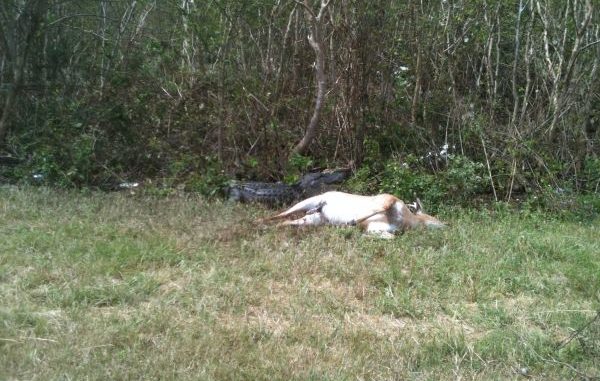
Hurricane Isaac storm surge estimated to have killed 90 percent of fawns in region.
Some deer hunters in Southeast Louisiana could face more-restrictive hunting regulations because of Hurricane Isaac’s storm surge, which is believed to have killed many of the fawns where waters were pushed the highest, a Louisiana Department of Wildlife & Fisheries biologists said in mid September.
LDWF Deer Study Leader Scott Durham told Louisiana Sportsman that recommendations for deer-season changes wouldn’t be made until the October meeting of the Louisiana Wildlife & Fisheries Commission.
However, Durham said it was clear the storm impacted deer herds in swamps and marshes stretching from the Gramercy area all the way down to lower Plaquemines Parish.
Particularly hard hit were the deer in the swamps surrounding Lake Maurepas.
“I’m thinking we probably had a 90-percent fawn mortality rate,” Durham said.
Durham said the waters that overtopped Airline Highway between Interstate 10 south of Sorrento and Gramercy, as well as I-10 near LaPlace, pushed waters several feet higher than normal — and those waters remained high for some time, proving too much for the youngest deer in the herd.
“Those are late-bred deer, so those fawns were probably two to six weeks old,” Durham said. “Those fawns are born from mid July to mid August.”
The veteran biologist said many adult deer were able to survive after water covered ridges and spoil banks because of the nature of the habitat.
“A lot of that country has flotant, so a lot of deer just hung in that and rode it up and down,” Durham said.
While that worked for most deer that were at least 1 1/2 years old, he pointed out that he observed some adult deer that were struggling to survive. That indicated that the youngest deer either couldn’t make it to these floating mats of vegetation or didn’t have the strength to remain on the moving rafts.
“They just weren’t big enough to do anything (to survive),” Durham said.
The impact was highlighted by a report from one private hunting club that borders I-10 near LaPlace.
“They said they found 12 dead fawns on one little levee,” Durham said.
Storm surge also likely hurt the youngest of the deer herds in Plaquemines and St. Bernard parishes, although Durham said he didn’t think it would have as major an impact as in the Maurepas Swamp areas.
“Those are not high-deer-density areas to start with,” he explained.
Also, deer in St. Bernard Parish at least had the option to get on the MRGO levees, which Durham said seem to have provided some dry land throughout the storm.
The loss of this year’s fawns won’t be felt until the 2013-14 hunting season, Durham said.
“Basically, there won’t be any 1 1/2-year-old deer next year,” he said. “There won’t be any 2 1/2-year-old deer the following year, any 3 1/2-year-old deer the next year, and so on.”
Obviously, that will put a crimp in the hunting of all but the most-rigid big-buck hunters, who probably won’t feel the hit for some time.
“If they’re trophy hunters, (the loss of the 2012 fawn crop) won’t really matter until five years from now,” Durham said.
Regardless of whether LDWF biologists decide to restrict hunting, Durham said individual hunters — particularly those on private land — should pay close attention to how the storm affected their deer.
“Private landowners should use common sense and adjust their management if they see a problem,” he said.
Of course, as with most things related to Mother Nature, there are some positives to the situation.
“Low deer densities are not always a bad thing,” Durham said. “It creates more food for the surviving deer.”
Read all Hurricane Isaac reports by clicking here.
Read other updates and post your own observations, photos and vids on the Official Hurricane Isaac forum thread.
Not a member yet? It’s free, so click here to register and get started today!